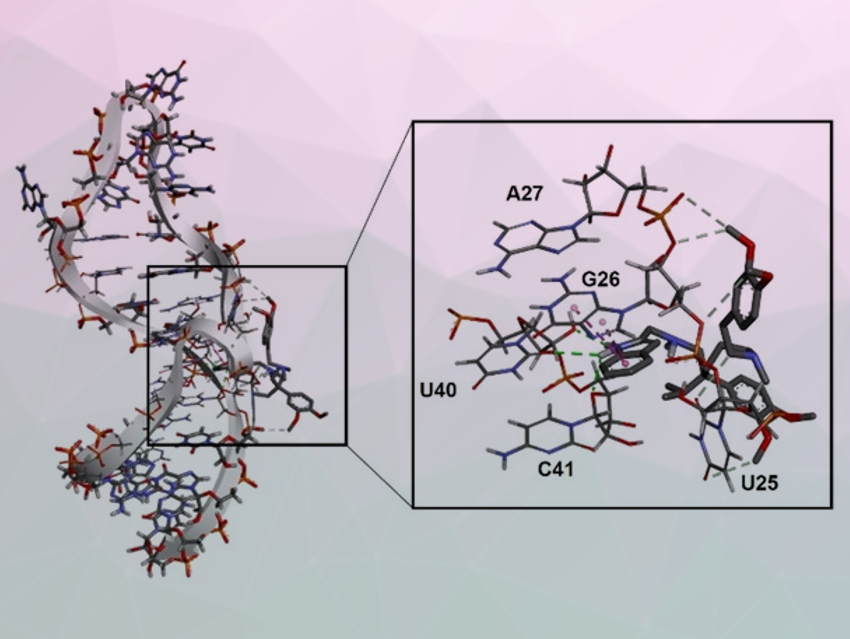Targeting biologically relevant RNA with drug-like small molecules is promising for the development of innovative therapeutics. There are first examples of successful clinical trials that demonstrate the potential of this approach. Targeting RNA with small molecules is possible because the 3D structure of the targets offers the possibility for specific binding. Most of the RNA ligands identified to date have been discovered by screening large compound libraries and there are only a few examples of rational design.
Maria Duca and colleagues, University Côte d’Azur, Nice, France, have screened a library of compounds to find a drug-like molecule that targets the transactivation response (TAR) RNA in the human immunodeficiency virus (HIV), or HIV‐1 TAR RNA. This RNA fragment binds to a protein called Tat (short for trans-activator of transcription) and is essential for replication of the virus. The team screened the library by measuring the compounds’ affinity toward a TAR fragment (pictured).
The team found that verapamil, a commercially available calcium‐channel blocker, has a promising chemical structure for the development of new RNA ligands. The team synthesized a series of analogs of verapamil. This led to a conjugate between verapamil and an indole fragment which can inhibit the Tat/TAR interaction in vitro with a micromolar IC50 value. This is a very promising inhibition activity compared to previously reported small-molecule TAR binders.
- Unveiling RNA‐Binding Properties of Verapamil and Preparation of New Derivatives as Inhibitors of HIV‐1 Tat‐TAR Interaction,
Céline Martin, Serena De Piccoli, Marc Gaysinski, Cécile Becquart, Stéphane Azoulay, Audrey Di Giorgio, Maria Duca,
ChemPlusChem 2020.
https://doi.org/10.1002/cplu.201900650




